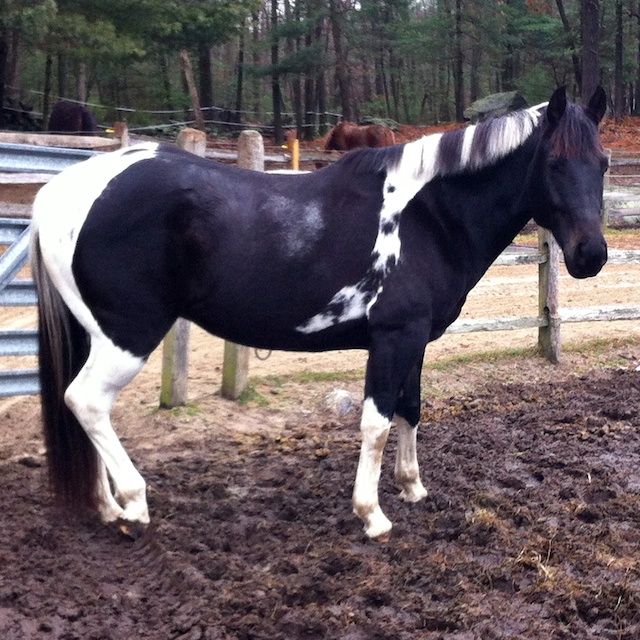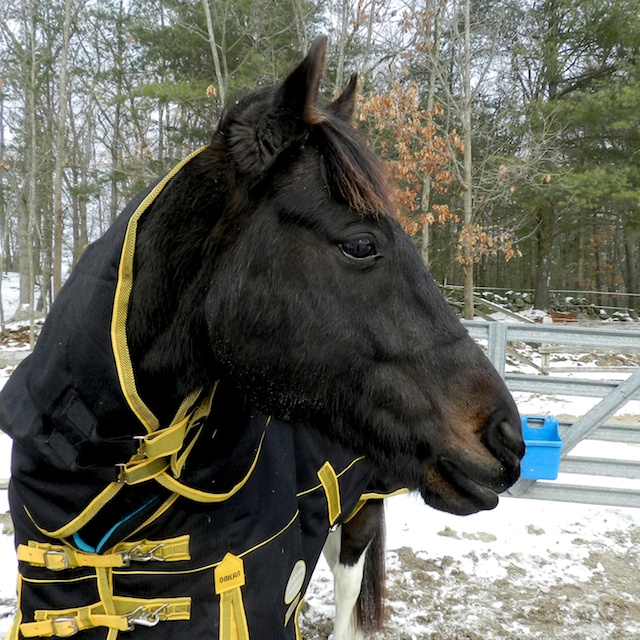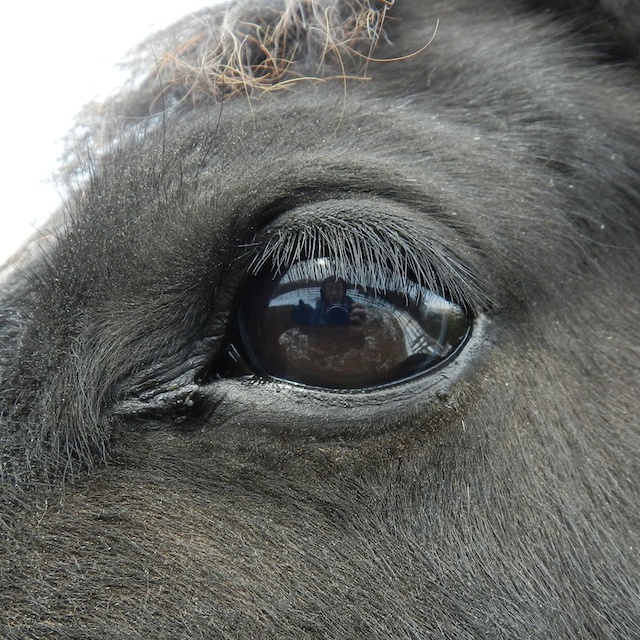The last thing that I was looking for when I went shopping for a horse was a flashy paint. In fact, my preference was for a solid brown or a bay with black points. Understated and classic. I certainly didn’t go out looking for a horse that inspired Oh! He is so beautiful! bursts of admiration. However, that is what I got. Even standing in mud, Tonka looks good. (This is Tonka early in our relationship, in 2013.)

What I did go looking for, my #1 criterion, was what horsemen call a kind eye. (Although, of course, horses have two eyes, it is always referred to in the singular.) Tonka has one.

Like people, horses are born with their own unique personalities. Some are introverts and some are extroverts. Some horses are competitive and have the look of eagles. Some are worriers, and some are endless, mischievous troublemakers. Some have gentle souls and thoughtful minds, and those are the horses with kind eyes.
You can’t train a horse to have a kind eye, but you can crush it. There are obvious ways to do that, such as physical abuse. There are other ways to do it as well, that are more subtle but far more prevalent.
Just like the well-behaved child in school is often ignored, so too, a good horse is often casually handled. Only when he acts up (perhaps a spook on the lead-line) is he paid attention to, and then it is with a yank on the rope. The horse with the kind eye who is ignored might learn to misbehave for attention. Or, more likely, he will simply go dull. That kind eye will turn listless.
Horses respond to pressure, both physically by touch and also when others enter into their personal space. They are exquisitely tuned to body language. They are herd animals that can read the emotional life of another horse 20 feet away by the flick of an ear. They are animals that form lifelong friendships. They also hold grudges. Horses believe that everything has cause and effect. So to keep that kind eye intact, it is not enough to simply dote on your horse. It’s not the love you feel, or the treats you give, but how you treat him. Every action (or inaction) matters, even what you do from a distance. So, to nurture Tonka’s kind eye, I have to comport myself in a way that relates to him (even across a field, my movement affects his) and I have to behave consistently and with purpose.
People like to spoil their horses and it is easy to do. Horses have big appetites and they relish treats. You might say that you want to give your horse a carrot just because you love him, but the horse doesn’t see it that way. In his mind, there must be a reason why you have handed over that bit of food. If he nuzzles you and gets a carrot, the next time he sees you he’ll try another nuzzle. That doesn’t work? He’ll shove. I don’t want a pushy, needy horse, but that doesn’t mean that I never give Tonka carrots. Instead, they are offered after I ask him to do something and he does it. I might ask for a touch to the palm of my hand (this is called “targeting”) or a head down. I ask, he responds. I pay attention to him as much as he does to me. I also reward him for what are called default behaviors – what he should do when nothing else is being asked of him. For example, in the cross-ties in the barn aisle, he knows to stand quietly, all four feet square, looking straight ahead. Good boy, I say, and give him a scratch on the withers, or sometimes, a peppermint. I never take his good behavior for granted.
Tonka’s kind eye glimmers with intelligence and trust. Every interaction works to keep and build on that.

His fancy black and white coat is a bonus. I confess that I do like having such a handsome horse! But in the end, it’s the relationship that matters.


Child behaviour would benefit from the same approach
It does!